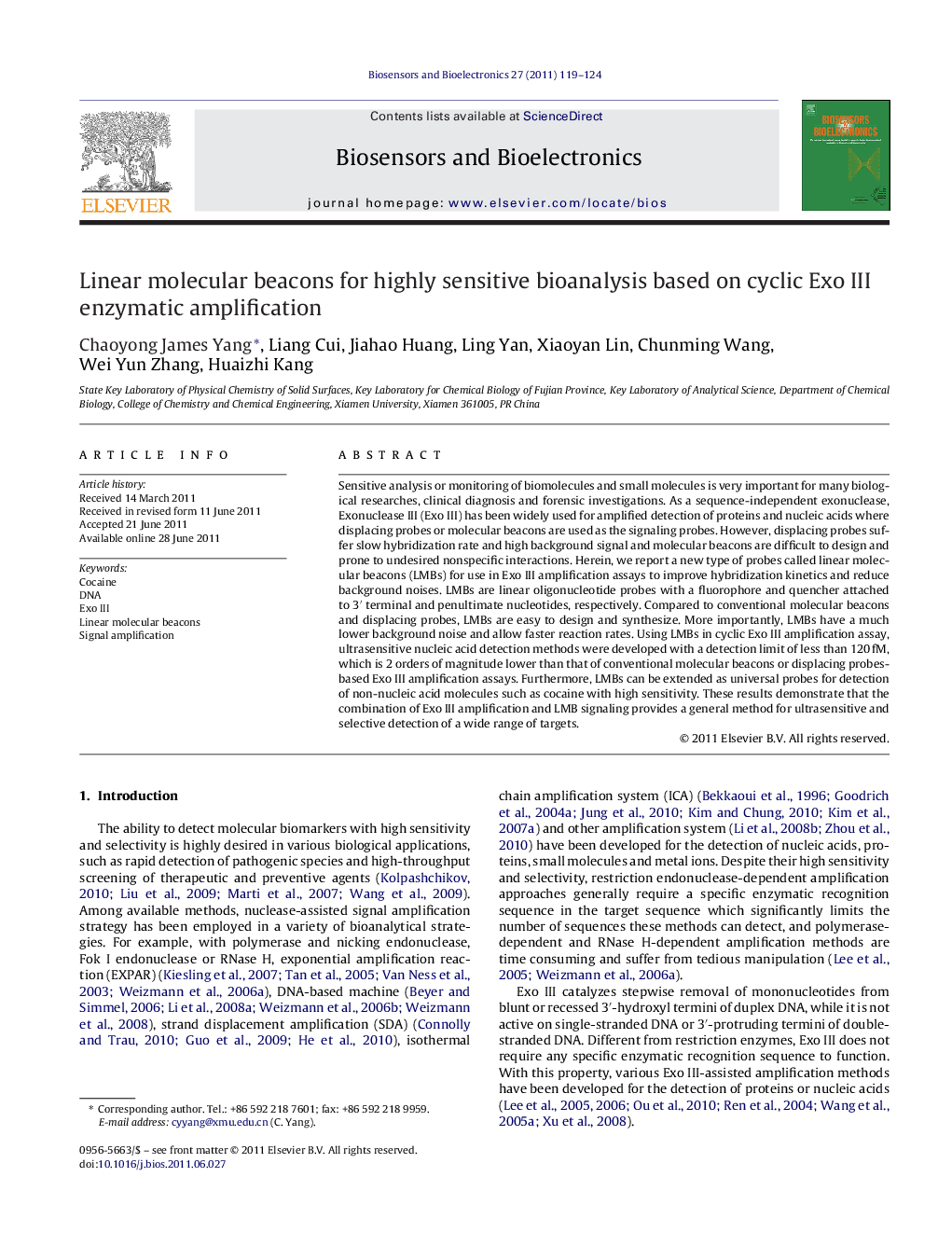| Article ID | Journal | Published Year | Pages | File Type |
|---|---|---|---|---|
| 867764 | Biosensors and Bioelectronics | 2011 | 6 Pages |
Sensitive analysis or monitoring of biomolecules and small molecules is very important for many biological researches, clinical diagnosis and forensic investigations. As a sequence-independent exonuclease, Exonuclease III (Exo III) has been widely used for amplified detection of proteins and nucleic acids where displacing probes or molecular beacons are used as the signaling probes. However, displacing probes suffer slow hybridization rate and high background signal and molecular beacons are difficult to design and prone to undesired nonspecific interactions. Herein, we report a new type of probes called linear molecular beacons (LMBs) for use in Exo III amplification assays to improve hybridization kinetics and reduce background noises. LMBs are linear oligonucleotide probes with a fluorophore and quencher attached to 3′ terminal and penultimate nucleotides, respectively. Compared to conventional molecular beacons and displacing probes, LMBs are easy to design and synthesize. More importantly, LMBs have a much lower background noise and allow faster reaction rates. Using LMBs in cyclic Exo III amplification assay, ultrasensitive nucleic acid detection methods were developed with a detection limit of less than 120 fM, which is 2 orders of magnitude lower than that of conventional molecular beacons or displacing probes-based Exo III amplification assays. Furthermore, LMBs can be extended as universal probes for detection of non-nucleic acid molecules such as cocaine with high sensitivity. These results demonstrate that the combination of Exo III amplification and LMB signaling provides a general method for ultrasensitive and selective detection of a wide range of targets.
• A linear molecular beacon (LMB) for use with Exo III has been developed. • LMB is a linear oligonucleotide probe with a fluorophore and quencher attached to 3′terminal and penultimate nucleotides respectively. • LMB does not require any intramolecular structure and thus is very easy to design. • LMB offers higher signal-to-background ratio and faster hybridization kinetics. • LMB can be used with Exo III for rapid, selective and ultrahigh sensitive detection of nucleic acid and non-nucleic acid targets.
